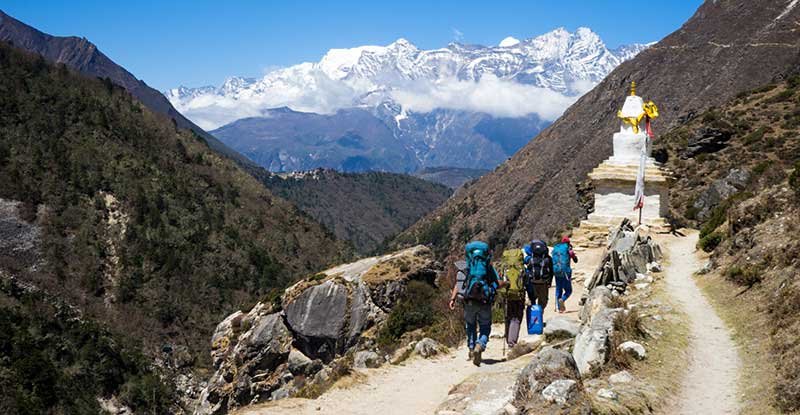Everest Base Camp Etiquettes

- 19-Jul-2016
- 0
Is Everest Base Camp Trek on your mind? Do you intend to explore the natural, cultural and architectural diversity while traversing on the trails to Everest Base Camp? If something like that is in your mind when you get to know some essential etiquette to be followed in Nepal, a culturally rich nation.
While you are exploring trails to Everest Base Camp, you need to keep in mind the following etiquettes so that you don’t offend the locals:
Common Courtesies:
‘Namaste’ or ‘Namaskar’ (which means “I salute the God within you”) is a common Nepalese greeting with palms held together a few inches below your chin and facing them upwards and slightly bowing your head. Hi and hello is also understood but is an informal gesture. Shaking hands is okay between men, but a man should extend his hand to a woman if she offers it to him. Dhanyawaad is like saying thank you, though English words such as thank you and welcome are also generally understood. Remember that locals in Everest and other rural regions are quite conservative about the culture.
Wear suitable clothing:
This is one of the most noticed and essential etiquette to be followed, especially when you are in rural areas like the Everest region and religious places. Long-sleeved shirts or decent-looking T-shirts and long trousers are suitable attire for men and long skirts or loose-fitting trousers and clothes covering shoulders and chest areas are suitable attire for women. While trekking too much skin showing is disrespecting the local culture and thus it may draw anger or hostility from the locals. Take good caution while visiting religious places and peoples’ homes.
Etiquettes in religious places:
You should remove your shoes before entering a temple, monastery, and other religious places; you may need permission before entering a Hindu Temple in many places including the famous Pashupatinath Temple. Always walk around stupas, temples, and monasteries in a clockwise direction and keep prayer wheels, during your trek to Everest Base Camp, to your right side. Leather products such as belts, shoes, and purses aren’t allowed inside Hindu and Buddhist religious places. The display of emotion in such places is a big no. Wear decent clothes in religious places which don’t have much skin showing.
Eating etiquettes:
Nepalese eat their food with their right hands and generally don’t use cutleries, though you may ask for it. Avoid touching your lips to a shared drinking vessel and offering food you have already tasted; these are considered bad etiquettes. ‘Momo’ is a popular food, and while trekking to Everest Base Camp you are more likely to get a meal of Dal Bhaat (a common staple dish with rice, lentils, fresh vegetable, and pickles) though other dishes are also available to you. Avoid eating beef among the Hindus and consuming alcohol in public places may invite trouble for you.
Other etiquettes:
Pointing your finger to someone is considered rude and do refrain from pointing your feet or the soles of your feet towards anyone. Ask for permission before taking photographs of people in rural areas en route the EBC route. Try not to step over a sacred place or a hearth. Nudity is offensive and men should wear short and women can wrap in sarong and douse themselves as village women do if s/he likes bathing in a stream or village tap. Dispose of your filths in the proper place and also avoid making disturbances or harm to fellow locals, and surroundings.
Thus, you should follow the basic etiquettes which shall make your trek an entertaining one and without much hassles and problems. Respect the locals, follow basic etiquettes and enjoy your trek to Everest Base Camp!




